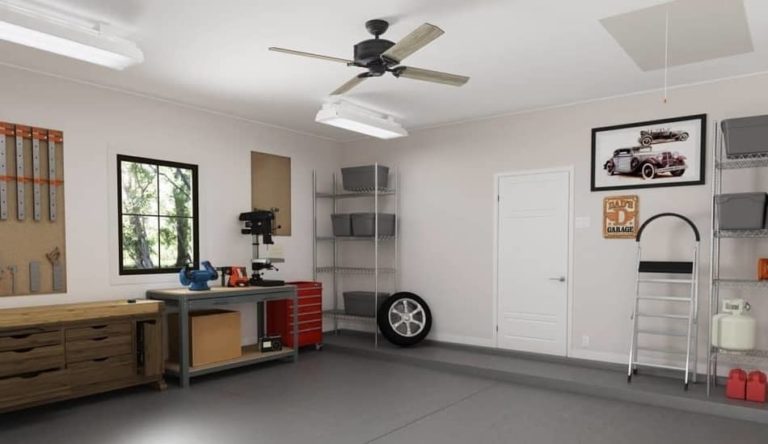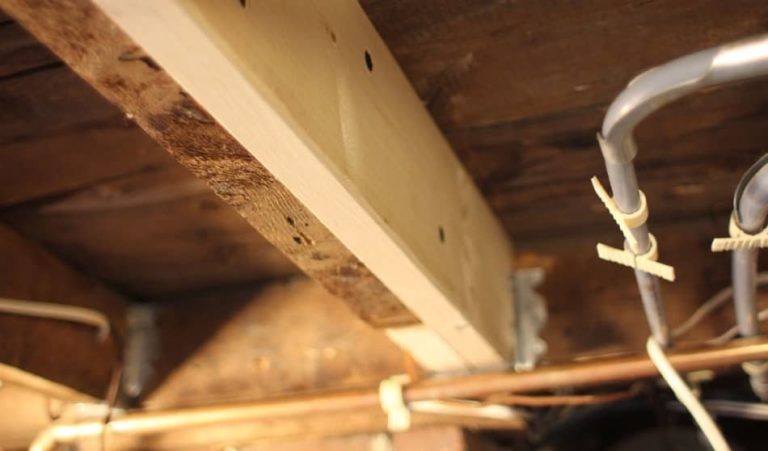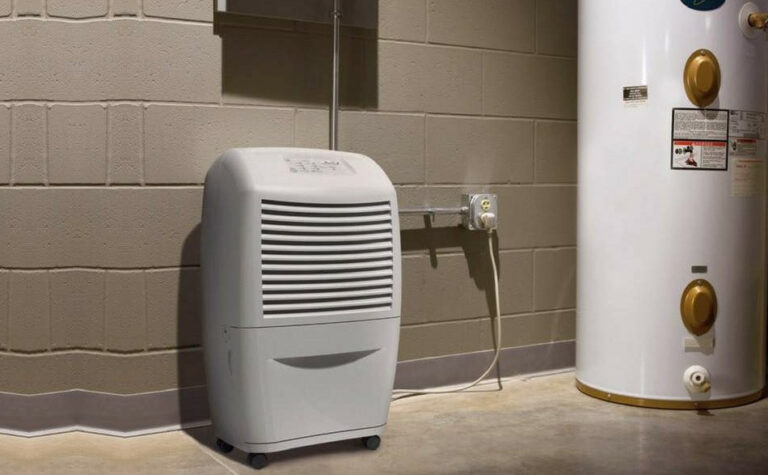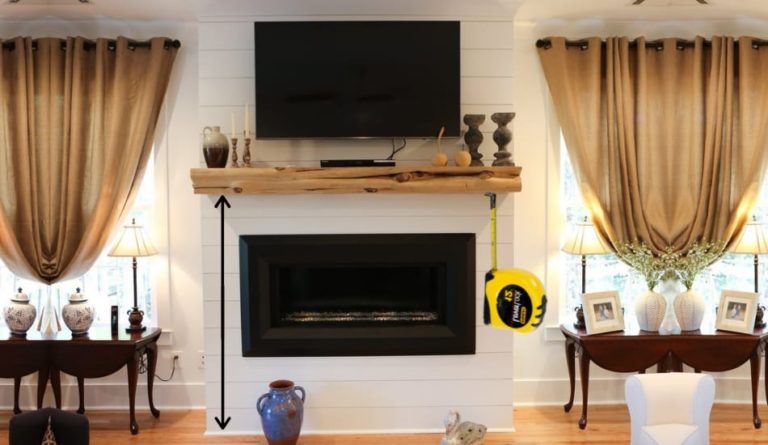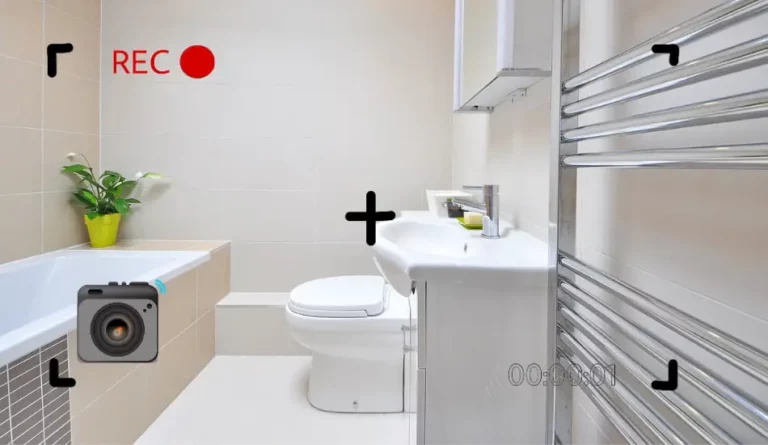What Is The Ideal Basement Humidity Level? Expert Explain
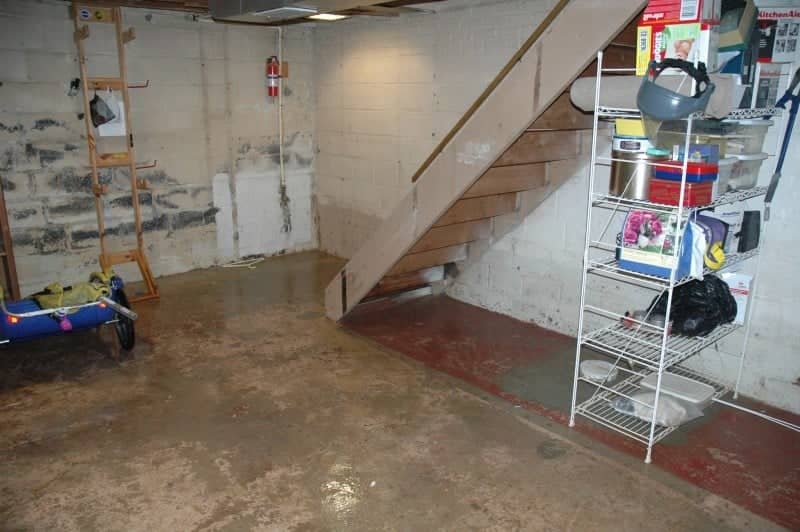
The basement is the most vulnerable area to the dampness of all locations in your house. Humidity may be a severe unseen hazard to your home and family’s health, so you need to keep every area safe to live in. When it comes to humidity in the basement, you don’t want it to be too high or too low. What, on the other hand, is the optimal humidity level for a basement? To make things easier for you, we’ve gathered all the information you’ll need right here. So, let’s start!
Table of Contents
What Is The Ideal Basement Humidity Level?
So What Is The Ideal Basement Humidity Level? Typically, the ideal basement humidity level is between 30 to 50 percent. However, this usually depends on the climate and temperature where you are located. During summer, the average basement humidity level is around 50-65%, while during winter months humidity level drops to about 25-40%.
What Causes Humidity In Basements?
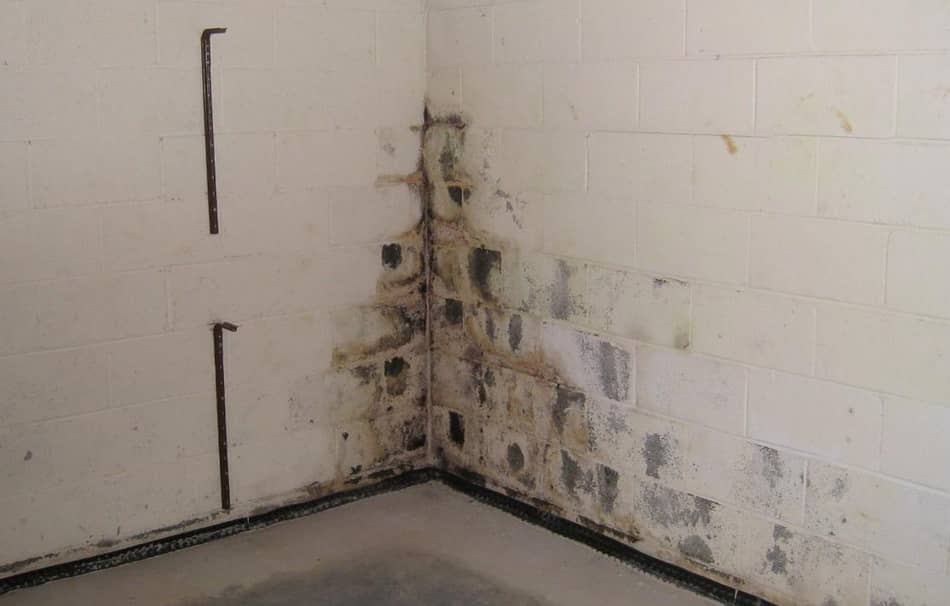
The evaporation of water into the air causes humidity in your basement. This occurs when the soil that is inside your basement gets oversaturated with water. Although poor insulation and huge temperature variations between interior and outdoor temperatures are apparent issues, there are numerous other reasons that you may not have considered.
Laundry may have an impact, particularly if the exhaust vents in your basement are leaking. Moisture and even floods can be caused by a faulty sump pump or gutter spouts that send water too near to the foundation. Lastly, keep an eye on the ceiling for signs of leaky pipes, which can cause damage to other sections of your house in addition to adding moisture to the basement.
Common Causes Of Humidity In The Basement
Here are the most common reasons why humidity gets in the basement:
- Indoor Water Leakage
- Lack of Circulation
- Rain Water
- Poor Drainage System
If you are interested, feel free to read Finish A Basement Without Drywall Or Studs.
Effects of Basement Humidity Issues
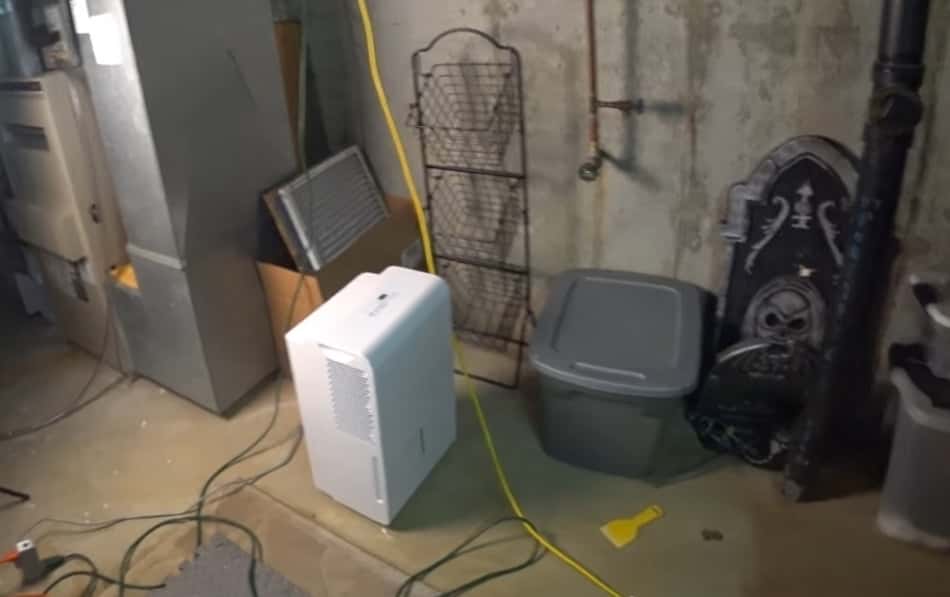
To get rid of humidity in your basement, you first need to understand it. There are three different types of humidity effects that can occur: Low RH, High RH, and Ideal RH level. What is certain is that there is a different risk when it comes to relative humidity that can be too high or too low. To maintain a good relative humidity level in your basement you first need to be familiar with the causes and other factors that lead to the humidity in your home.
1. Low RH Effects
Dry sinuses and bloody noses are usually caused by low humidity levels in your home. Poor humidity can aggravate several respiratory diseases, such as asthma. Chapping and other skin issues are also known to be caused by dry air.
2. High RH Effects
Mold, mildew, and other fungal infestations are the major cause of high humidity levels. Wood and even concrete can be damaged by mold. The spores may also harm your family’s health. Black mold, for example, has been known to cause death.
High humidity, however, poses more than just a mold hazard. Termite populations flourish in damp conditions, which can lead to wood decay. Silverfish and even rats are attracted to condensation because it provides a water supply. These pests each provide their own set of health hazards as well as structural threats to your house.
3. Ideal RH Levels
Your basement may usually be used for one of three things: a wine cellar, storage, or furnished living or leisure area. Your relative humidity levels will fall into distinct ranges depending on the objective. You can reduce the danger of health problems and structural damage by understanding these ranges.
A humidistat is integrated into most dehumidifiers, allowing you to adjust and monitor humidity levels in the room. You may also invest in a hygrometer and place it near your dehumidifier. This gadget detects the quantity of moisture in the air and controls the dehumidifier accordingly.
How to Reduce Basement Humidity?
The best way to reduce humidity in the basement is to try the following:
- Install a Dehumidifier
- Repair Possible Leaks
- Install an Exhaust Fans
Basement Humidity Levels In the Summer
During the summer months, the air outside is much hotter and more humid. That air can enter your basement and raise the humidity level to about 60%. As a result, homeowners must try to restore and adjust humidity levels to the optimum range of 30 to 50 percent or there will be a risk of mold, mildew, and bacteria growth.
Related Article: How To Dry Out A Basement Fast? Expert Explain
Basement Humidity Levels In the Winter
During winter, cold air from outside might cause the humidity levels in your basement to drop. And if that chilly air makes it’s way inside, it can have a negative influence on your heating expenses as well. When external temperatures fluctuate from 20° F to 0° F during the winter, you’ll want to keep your in-home humidity levels between 25% to 40%, with lower percentages designated for the colder months. Low humidity levels can be harmful to your health, producing nosebleeds, dry skin and increasing your vulnerability to typical winter illnesses.
Finished and Unfinished Basements
A relative humidity level of 30 to 50 percent should be maintained as a general guideline in your basement. This range not only reduces the danger of hazardous bacterial development but also eliminates numerous health concerns linked to low humidity. In colder climates, reducing the relative humidity level to a range of 30 to 40% throughout the winter season will reduce window condensation.
Dehumidifiers Vs. Exhaust Fans
Typically, an exhaust fan will work better and will remove the moist air from your basement much faster compared to a dehumidifier. Dehumidifiers come in a variety of sizes and forms. With the aid of cold evaporator coils, refrigerant dehumidifiers convert moisture into water. Because it works well at room temperature, dehumidifiers are considered the industry standard for homes.
A desiccant dehumidifier is another alternative, which pulls air through a chamber containing water-absorbing gel packs. These are generally quieter devices and use less electricity to get the job done than the other choice. They will, however, necessitate the replacement of the gel packs after they have become saturated.
Installing basement (exhaust) fans to regulate humidity levels is another option to minimize dampness. These high-capacity vents, which work similarly to a bathroom fan, force wet air out of the basement and into the open air. Bathroom fans can also help to decrease humidity in the house if used carefully.
Do You Need To Run Dehumidifier During Winter And Summer?
If the relative humidity level is more than 60% in your basement, you should operate a dehumidifier regardless of the season. Nonetheless, certain seasons have more dry air than others, and humidity levels may be lower. In a wider context, winter air is usually colder and drier than summer air. Consequently, there will come a day when you will not need to use a dehumidifier in the winter.
This does not rule out the possibility of humidity levels exceeding those suggested during the winter months, so keep an eye on it. On the other hand, summer months contain high humidity, necessitating more frequent use of the dehumidifier.
Ideal Dehumidifier Settings For Basement Use
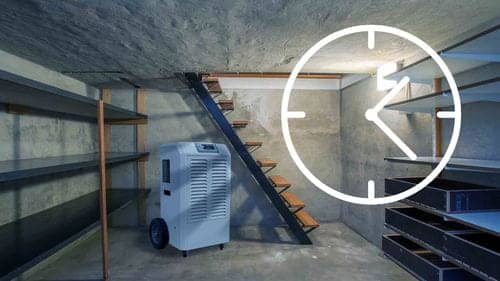
A basement’s humidity level should be exactly right to retain humidity at a safe level. Because basements are more exposed to a continual source of moisture from the outside, your dehumidifier should operate regularly. At a relative humidity of 60% or above, molds become a concern. As a result, we recommend that you set your basement dehumidifier to a humidity level of 40 to 60 percent. You can set your dehumidifier to maintain a precise humidity level of 50 percent.
This is simple to achieve with humidistat-equipped machines, which allow you to specify exact relative humidity levels that the device should maintain before turning off. The humidifier starts to operate as soon as the humidity level rises again.
There is also a potential that the dehumidifier will never turn off, which indicates that there is probably air leakage allowing more moisture into the basement. When this happens, your dehumidifier needs to work considerably harder and longer than it typically would, which will cost you more money in the long run. Ensure that any leaks are discovered and sealed.
Best Place To Put Your Dehumidifier In The Basement
If you’re using a portable dehumidifier in a basement with mild moisture problems, the best spot for it is on the floor. If it is put on an elevated surface, it is possible that it will limit air convection circulation. The dehumidifier would emit warmer air than it draws in if it was placed on the floor.
Also, make sure the dehumidifier is not too close to any surface. This is since objects directly adjacent to the dehumidifier tend to dry out more rapidly. As a result, items such as wood or concrete may develop cracks or become excessively dry. Even if the entire basement is not fully dehumidified, this can happen.
It’s also worth noting that the dehumidifier should be positioned in the basement’s center area, where there is the most air. However, it is ideal if you continue to try to center the unit in the best position possible to obtain optimum air circulation.
Basement Humidity Level Control
If your humidity levels deviate from the average, there are several important things to consider. Among them are the following:
- Hygrometer readings
- Rusty appliances and fittings
- The appearance of mold and mildew
- Stuffiness and difficulty in breathing
What Is the Best Humidity Level For Wine Cellars

A relative humidity level that is recognized for wine cellars is around 50% to 70%, while the 60% RH level is ideal. Wine cellars are becoming increasingly popular among houses of all income levels. Whether you already have a wine cellar or intend to build one in your basement, it’s critical to keep the temperature and humidity at optimal levels so that the wine can age correctly.
These areas are typically well-insulated, have their humidifier machines, and should be kept at a relative humidity level of 60%. Please keep in mind that the RH of other rooms in your basement must remain between 30% and 50%. Dehumidifiers may overwork if there are leaks in the insulation of your wine cellar.
For those who want to know more, feel free to read; Cost Of Lowering Basement Floor.
FAQ: People Also Ask
1. Is 60% Humidity Too High For a Basement?
Relative humidity in your home should be kept below 60%, preferably in the range between 30% and 50% if at all possible. Pests (such as cockroaches) and dust mites may be deterred by low humidity.
2. What Is High Humidity in The Basement?
A high humidity level for your basement is everything that is more than 65% moisture in the air. Excess humidity in the basement can result from a variety of factors. Leaky exhaust vents are one of them.
3. Do I Need To Run a Dehumidifier In Basement In Winter?
Because the air in your basement is generally dry throughout the chilly winter months, a dehumidifier is not required to run during winter. Most dehumidifiers should not be used in temperatures below 60 °F because the moisture extracted from the interior air might freeze and harm the device when it condenses on the cooling coils.
Final Thoughts
Now that you know how to prevent high and low humidity levels in your basement, you can do something about it. Unless safeguards and preventive measures are taken, every finished basement can become vulnerable to changing humidity. Mold, mildew, and termites thrive in high humidity environments, whereas paint deterioration, rust, and respiratory issues thrive in low humidity environments.
Without a doubt, no scenario is preferable to another. The only way to ensure a comfortable atmosphere all year is to adjust the moisture to an optimal level according to the season. Assess the humidity levels with a hygrometer and take the necessary steps to keep them in check while they’re still in hand. I hope that this article has helped you.


